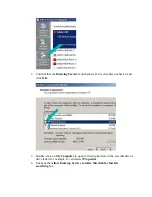
companies or products. Each company listed is independent from Seagate and is not under the
control of Seagate; therefore, Seagate accepts no responsibility for and disclaims any liability
from the actions or products of the listed companies. You should make your own independent
evaluation before conducting business with any company. To obtain product specifications and
warranty information, please contact the respective vendor directly. There are links in this
document that will permit you to connect to third-party web sites over which Seagate has no
control. These links are provided for your convenience only and your use of them is at your own
risk. Seagate makes no representations whatsoever about the content of any of these web sites.
Seagate does not endorse or accept any responsibility for the content, or use, of any such web
sites.
My USB device is detected with a ! or ? in
Device Manager
If a USB external drive displays in "Other Devices" in the Windows Device Manager, it is
possible that additional drivers are required for it, that Windows lost track of the drivers, or the
drive is malfunctioning. This article gives troubleshooting steps.
If the device is in "Other Devices" (look for "USB Mass Storage Device") then it is possible that
additional drivers are required for it, that Windows lost track of the drivers, or the drive is
malfunctioning.
To see Device Manager, right-click on (My) Computer/ This PC > Manage > choose Device
Manager from the left column.
1.
ensure you have Service Pack 4 (Window 2000) or at least Service Pack 1 (Windows
XP).
2.
try another USB cable and another USB port.
3.
try another computer. If it works on another computer, the drive is fine but the Windows
drivers on your computer need to be reloaded.
4.
If the drive is not detected there in the same way, go back to the USB Mass Storage
Device and double-click on it. Look under the General tab.
If Code 28 appears:
1.
First see the
2.
In general, Code 28 can often be overcome by following these steps:
1.
right-click on the drive (probably USB Mass Storage Device) and choose
Uninstall
2.
turn off the drive





















